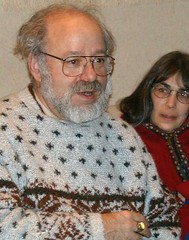Hidden Network That Lets Tumors Thrive
ScienceDaily (May 29, 2009) — Howard Hughes Medical Institute researchers have identified many potential new drug targets for cancers long deemed “untouchable” due to the type of genetic mutation they contain. These studies are beginning to reveal new ways of attacking cancer by targeting a largely hidden network of normal genes that cancer cells rely on for survival.
.......
Until recently, however, researchers simply did not have the tools to undertake a large-scale, systematic analysis to uncover genetic dependencies in mammalian cells. The discovery of RNAi a little more than a decade ago is making it possible to do genetics in mammalian cells. The cellular machinery involved in RNAi first identifies short segments of suspicious-looking RNA, and then destroys all identical copies of that RNA. The result: None of the protein that the RNA encodes for gets made.
While the natural function of RNAi is to prevent viruses from replicating inside cells and to control endogenous gene expression, scientists discovered they could exploit the process to squelch individual gene products. To do so, they introduce a short segment of RNA that looks like one of the cell's normal genes. The RNA interference machinery grinds into action and shuts down production of the protein made from that gene.
Gilliland’s team, which included first authors, Claudia Scholl and Stefan Fröhling, as well as HHMI investigator Tyler Jacks at MIT, began their studies about two years ago. The team’s interest in leukemias informed their decision to focus on using short hairpin RNAs (shRNAs) -- single strands of RNA that fold back on themselves -- to selectively knock down the activity of serine/threonine kinases and tyrosine kinases. In recent years, kinase inhibitors have emerged as highly successful therapy for a subset of leukemias.
Gilliland’s group began a collaboration with William C. Hahn at the RNAi Consortium at the Broad Institute to use the Broad’s automated RNAi screening technology to assess about 5,000 shRNAs targeting about 1,000 human genes in a panel of eight human cancer cell lines. The shRNAs were carried in lentiviral vectors, which the researchers used to infect four cell lines carrying KRAS mutations and four lines carrying KRAS-wild-type genes.
At




No comments:
Post a Comment